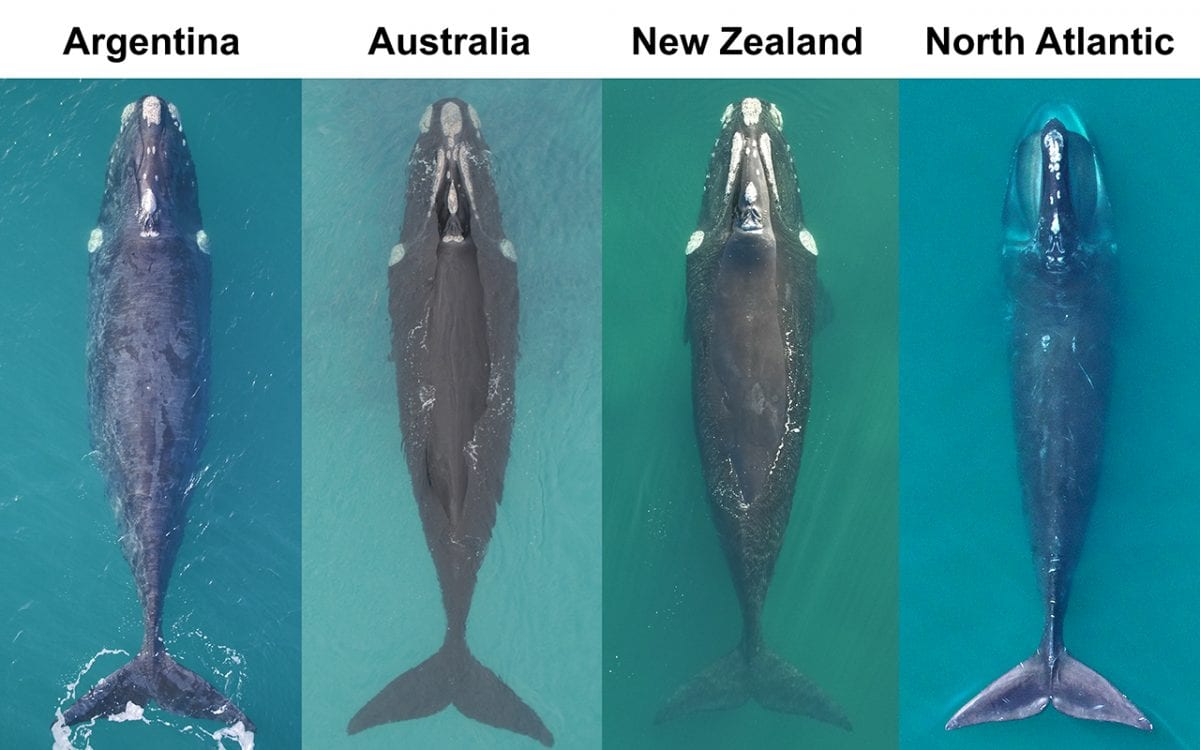Transient Orca Hunting and Grey Whales off Saanich
Many pods of Transient Orca were observed in many areas, from Howe Sound and off Parksville up through Georgia Strait to Johnstone Strait and around West Thurlow Island. On a few occasions, Transient Orca were spotted hunting sea lions, often recognized by a lot of splashing in the vicinity and the occasional leap (“porpoise”) out of the water by an Orca. Pods usually contain males and females – adult males can easily be recognized by their dorsal fin which stand as tall as 2-meters (6 feet) which is significantly taller than fins of females.
A Grey whale had been spotted by Nanoose Bay up to about April 22, often swimming very close to shore and delighting many onlookers. Another Grey whale (perhaps 2) appeared in the Cordova Bay area in Saanich on April 24 and 25. A few Grey whales tend to pass through Georgia Strait in the spring as they migrate northward and generally do not reside in inland waters for extended periods of time. Our report contains a number of sightings of Pacific White-Sided dolphins in Johnstone Strait and sightings of Dall’s porpoises in different waterways.
With respect to conservation, Right whales found in the Atlantic Ocean off the maritime provinces are endangered and are of extreme concern to conservationists and the Canadian Government. The sitiuation with the Right whales receive significant amount of attention, similar to the plight of the Southern Resident Orca here in B.C. Our magazine section contains two articles on Right whales that may be of interest.
Boaters, please use caution on the water. Federal laws require boats to remain at least 400-m away when viewing Southern Resident Orca in critical habitats and for other types of Orca, laws require boats to remain at least 200-m away from them. For other species of whales, dolphins, and porpoises, boats must keep a minimum distance of 100-m away from them but the minimum distance changes to 200-m if there is a calf OR if the Cetaceans are resting. Remember N.E.W.S. when you see a whale, meaning put your boat in NEUTRAL, ENJOY the view, WAIT till the whales are at a fair distance, and then SLOWLY leave the scene.
WOWs works throught the year, so please continue to keep your eyes open, and report your sightings to us.
Review our current Volunteer Job Postings
Archive Explorer navigates 21,000+ Cetacean Sightings, images, videos and audio recordings.
*Recommended for desktop browsers and newer mobile devices
Archive Explorer dives into the Coastal Cetacean world. View Cetacean sighting locations, photos and videos:
- All species including Orca, Humpback, Grey Whale or Dalls Porpoise
- Follow the endangered Southern Residents Orca in the Salish Sea
- Search for encounters with T002C2 Tumbo
- Witness a close-up Orca encounter video in Port Alberni harbour
- Follow the T010s Transients as they hunt and travel the inside passage
- Track "KC", the ever popular Humpback's movements
- Locate any of 12,000 named locations on the BC and WA State coast
- Print custom sighting reports and maps (Coming Soon)
Archive Explorer Help Page explains many advanced functions
Send your Comments and Questions to: Archive Explorer Feedback
COMING SOON: Our New Archive Dataset Interface is in the works, but we don't want to hold up any ongoing research.
To access 21,000+ sightings in our database to November issue #2019-049 in a downloadable csv file for use in a spreadsheet, please Click Here.
Blue whales are the largest mammals on Earth. Because of their enormous size, the whales must carefully balance the energy gained through their food intake with the energetic costs of feeding, such as diving, holding their breath or opening their mouths, which slows their movement in the water. Adding to the challenge: their prey are tiny krill and they must find and eat large volumes of them to make any energetic headway….
read on
In addition to a camera, the suction-cup tags also carry an acoustic recorder, depth sensor and accelerometer, which together, collect data on the behavior, movement and breathing patterns of the whales. Researchers also deployed drones to simultaneously watch the graceful creatures from above and observe their size and body condition….
read on
Using drones and a method called aerial photogrammetry to measure the body length and width of individual right whales in four regions around the world, the team compared body condition of individual North Atlantic right whales with individuals from three increasing populations of Southern right whales: off Argentina, Australia and New Zealand….
read on
read on





